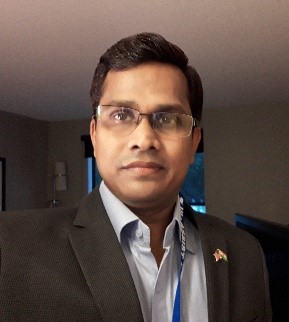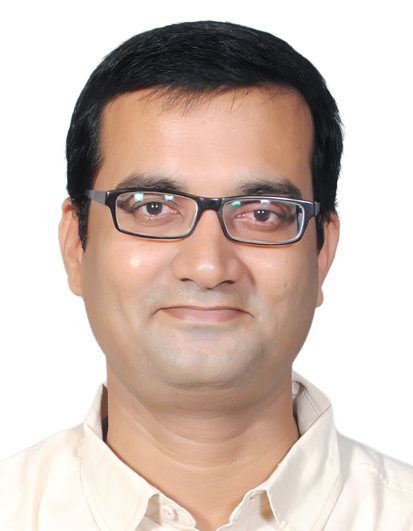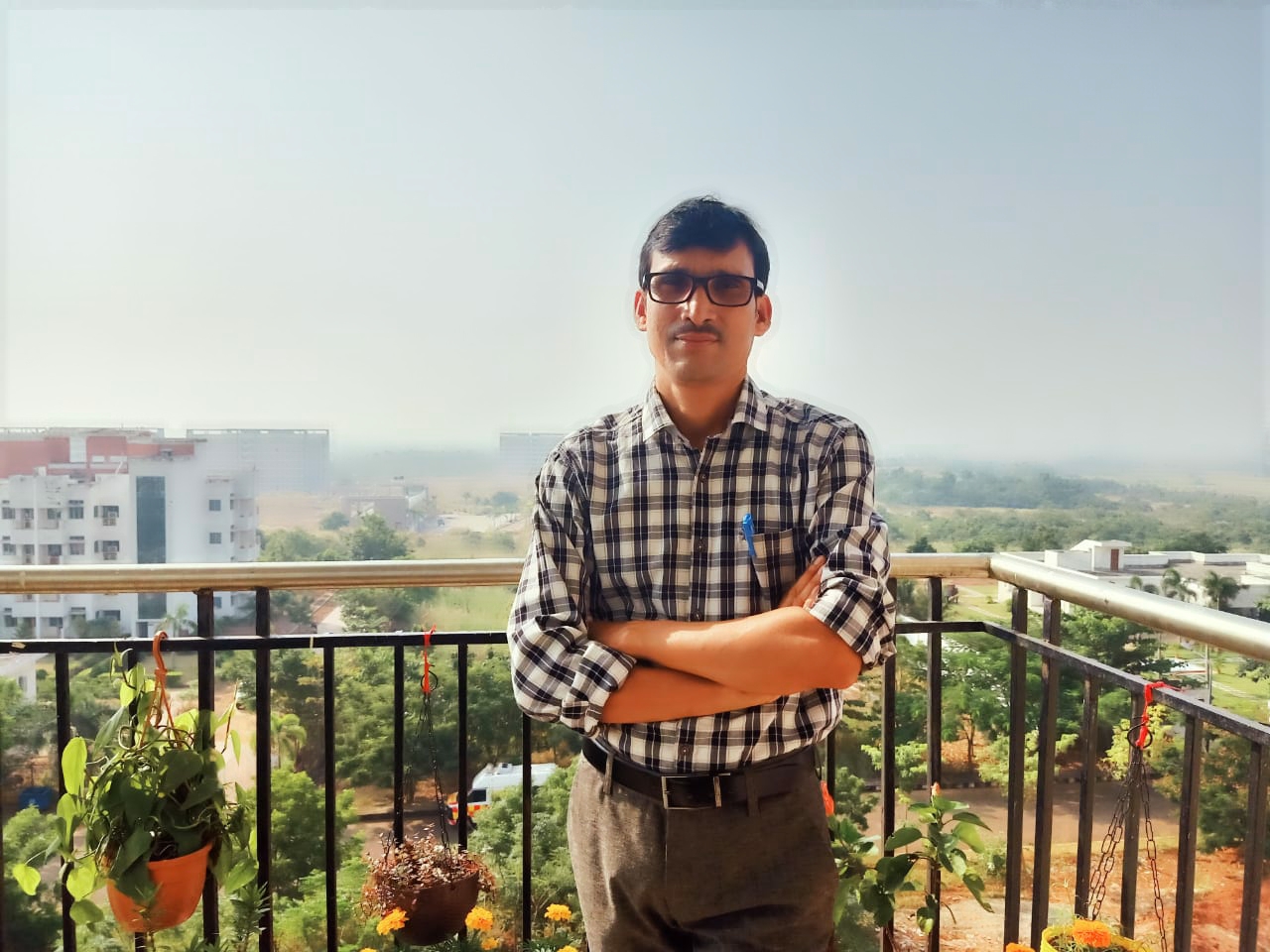Head of the School
 |
Prof. Subhransu Ranjan Samantaray +91 674 713 5750
hos.ses@iitbbs.ac.in |
Associate Heads
Electrical Engineering
|
Electronics & Communication Engineering
|
Computer Science & Engineering
|
- Since the advent of wireless and mobile technology, the communications sector has witnessed an indomitable growth in its journey to bridge the distances across the world. The demand for better connectivity, high bandwidth and data speeds for wireless internet, techniques to convert real world signals into digital form for processing and transmission, and most importantly, achieving all of this without sacrificing power, has demanded considerable research focus.
- The ECE group at IIT Bhubaneswar is committed to make the technology more directed for practical applications. The R&D focus has been on applications such as speech-based access of agricultural commodity prices, and weather information in the local Odia language, which involves automatic speech recognition, and responses through pre-recorded and dynamically generated dialects. The biggest highlight of this system is that it needs no internet connection.
- The major thrust areas of the group are: communication and modulation technologies including MIMO-based transceiver designs
- 1. space shift keying (SSK) systems using antenna arrays
- 2. energy harvesting communications for simultaneous transmission of information and power over the same channel
- 3. technology in healthcare, including design of wearable wireless healthcare monitoring systems
- 4. Internet of things (IoT)-based health monitoring
- 5. Bio Signal Processing
- 6. Computer Vision
- 7. Machine Learning & Deep Learning
- 8. Coding techniques, Algebraic Error Correcting Codes; Index Coding; Network Coding; Coded caching; Coded Distributed Computing
- If there has been a boom in the wireless communications industry over the last four decades, it has been due to the strides made in radio frequency (RF) and microwave technology, which essentially forms the back-end of modern day wireless communication systems which offer high range, throughput, low power consumption, and high data rates.
- At ECE, significant focus is placed to direct microwave technology for not just communications, but also for several other applications in their own domain.
- The major thrust areas of the group are:
- 1. the design of RADAR systems to detect human vital signs for search and rescue operations
- 2. bone health detection and classification using microwaves
- 3. metamaterial absorbers and reflectors; modelling and design of high Q/high SRF planar RF inductors
- 4. coupling and hybrid structures for RF measurement applications
- 5. tunable and reconfigurable RF subsystems for broadband performance with spurious rejections
- 6. Remote sensing: Microwave and Optical Sensors for Healthcare, Optical sensor Structural Health Monitoring
- 7. Antenna and Antenna Arrays, Microwave Absorvers and Polarisers, Computational Methods and Radio frequency identification (RFID) system
- 8. Communication Systems: Wireless Communication (Front-end Design, MIMO Systems, THz Communications) Green Communication (Cognitive Communication, Energy Harvesting)
- 9. Computational Techniques (Traditional and Evolutionary Nature-Inspired Methods)
- 10. Radar Systems: Vehicular MM-wave Radar, Ground Penetrating Radar, Through-wall Imaging Radar
- Optical Networks and Engineering
- If there has been a boom in the wireless communications industry over the last three decades, it has been due to the strides made in radio frequency (RF) and microwave technology, which essentially forms the back-end of modern day wireless communication systems which offer high range, low power, and high data rates.
- Looking at the ever-increasing demands for high bandwidth, optical networks are a gateway to the future of communication systems. At ECE, significant focus is placed to direct microwaves and optical technology for not just communications, but also for other applications such as design of distributed fiber optical sensor systems for structural health monitoring of oil and gas pipelines, which offers ranges up to tens of kilometers using a single fiber cable.
- The next generation wireless networks require fronthauls/backhauls that can provide immense data rate support while being inexpensive. Shared optical networks like passive optical network (PON) is a primary candidate for future fronthauls. However, the original medium access control (MAC) protocols designed for PONs are not suitable for the purpose. Hence, carefully designed MAC protocols are the need of the hour.
- Another candidate for fronthauls is free space optics (FSO) owing to its data carrying potential and cost effectiveness. Data transmission using the FSO network comes with its own set of challenges like atmospheric turbulence, scintillation, absorption, scattering, etc. All these impairments affect network reliability. Hence, building an FSO network also requires carefully designed algorithms, which is also being researched upon.
- The major thrust areas of the group are:
- 1. Optical Communication
- 2. Optical Sensor
- 3. Photonic-electronic signal processing
- 4. Fiber Sensor-based Structural Health Monitoring System Design
- 5. Architecture and MAC protocol design for wireless-optical integrated networks, optical access networks, wireless access networks, edge computing, and free space optical networks
- Consumer electronics demand use of ultra-small, scalable and easily modifiable engineering entities which should act as the 'heart' of any electronic system. In the world of technology boom where every electronic product is 'machine learned' and 'smart', pushing Moore's Law to its limits is obvious.
- With the advent of nanotechnology, quantum technology and alternate-to-silicon materials, electronic device research is much more than just laboratory findings which is even more backed by the recent Government of India missions. To address these national and global requirements, the Semiconductor Devices group at IIT Bhubaneswar is readily playing their roles.
- Blended by a combination of electronic materials, silicon and wide bandgap semiconductors and state-of-the-art simulation, modeling and fabrication process lines, the group forms an efficient combination in performing translational research in a plethora of applications covering various sectors.
- The major thrust areas of the group are:
- 1. Sensors and spectroscopy
- 2. Wide bandgap semiconductors and power devices,
- 3. Emerging nanoelectronic devices, electronic materials
- 4. 3D NAND memory, energy generation and storage devices
- 5. Reliability analysis of semiconductor devices,
- 6. Machine learning augmented with TCAD analysis of semiconductors
- 7. Semiconductor device modelling
- 8. Cryogenic-CMOS for analog front end circuitry
- 9. Device circuit co-design
- Efforts are on to push the boundaries to achieve large scale integration of circuits with high speed, and low power. Much of the R&D efforts are directed to design of heterogeneous multi-core systems with emphasis on resource-aware programming paradigms. This is backed up with design of tightly coupled processor arrays and accelerators, with emphasis on synthesizable logic structures, with the aim of integrating them into bus-based architecture systems. These systems are shown to be useful to run intensive, nested-loop programs.
- Performance enhancement with respect to speed and area requires knowledge of the architecture supported by the target prototyping platform, such as a Field Programmable Gate Array (FPGA). The exercise involves identification of the subset of Boolean logic functions which amicably maps to FPGA slice primitives through proper configuration using fast hardwired routing fabric and use lower amount of programmable routing resources.
- FPGAs support only a handful logic cell configurations, for which not many high speed implementation variants exist for a particular design. The research group at ECE addresses the involved design challenges of speed-area efficient implementations and inclusion of VLSI testability, fault detection, fault localization and fault tolerance with minimal overhead.
- Faculty members also work in the area of Analog, RF, and Mixed-Signal VLSI Integrated Circuits and Systems.
- There is also ongoing interdisciplinary research combining VLSI and microwave, which involves design of single-chip network analyzer testsets for 5G field testing and measurement applications, which offer broad bandwidth and high dynamic range.
- The major thrust areas of the group are:
- 1. Programmable Hardware Accelerators and Coarse-Grained Reconfigurable Architectures
- 2. System-on-Chip Design
- 3. Low power VLSI ASIC Design
- 4. High Level Synthesis and CAD for VLSI
- 5. Digital VLSI Architectural Design of ICs and FPGA Architectures
- 6. VLSI architectures for digital signal processing
- 7. VLSI architectures for computer arithmetic
- 8. VLSI architectures for fault tolerant & fault testable hardware design
- 9. Circuit design for high speed serial link (full-duplex, 4-PAM signaling, CTLE and DFE design, Equalizer adaptation)
- 10. Signaling across Silicon interposer and MCM
- 11. On-Chip DC-DC converters
- 12. Phase-Locked Loop; ADC Design for high speed serial Links; CMOS circuit design for Silicon Photonics.
- 13. IC Design for Neuromorphic Intelligence and Wireless Communications
- 14. New Radio System Architectures for Next-Generation Wireless Standards and RF/Wireless System-on-Chip (SoC) Design
Electrical Engineering (EE) group at School of Electrical Sciences of IIT Bhubaneswar is a vibrant mix of multi-disciplinary research areas within electrical power domain. The group has mix of people from both industrial and academic background.
Following are the glimpses of research activities by EE group at IIT Bhubaneswar. See our research poster!
1. SMART GRID TECHNOLOGY AND POWER SYSTEMS
The Smart Grid will allow utilities to move electricity around the system as efficiently and economically as possible. Smart Grid builds on many of the technologies already used by electric utilities but adds communication and control capabilities that will optimize the operation of the entire electrical grid. Smart Grid is also positioned to take advantage of new technologies, such as plug-in hybrid electric vehicles, various forms of distributed generation, solar energy, smart metering, lighting management systems, distribution automation, and many more. Smart grid group at IIT Bhubaneswar designed labs consisting of renewable sources like photovoltaic, fuel cell, battery and flywheel storage system. All these renewable sources are integrated to the grid. An optimum energy management algorithm is developed for maximum utilization of the renewable sources. In a smart grid system, demand side management is an integral part for cost and energy optimization. In this lab, a prototype for demand side management based on GSM communication module is developed. In an another experimental setup, power consumption of different AC and DC loads with solar system are studied. From this study, it is concluded that the efficiency of DC loads is more as compared to the AC loads.
2. POWER ELECTRONICS AND POWER QUALITY
As the trend towards electrification and renewable energies increases, enabling technologies such as power electronics are becoming ever more important. Power electronics is an umbrella term that encompasses the systems and products involved in converting and controlling the flow of electrical energy. Power electronics lab group at IIT Bhubaneswar has been actively working on high step-up dc-dc converters, low cost and high efficient multilevel inverter, Power electronics for renewable energy sources, energy storage and power quality, Switched Mode Power Converters and Design of Integrated Magnetics, Application of Power Electronics in Power Systems and Grid Interactive Converters and Wide-band gap semiconductor based high frequency power conversion. Some of the highlights include design of switched-capacitor (SC) based bidirectional dc-dc converter topology for multiple voltage gain and multilevel inverter topology has been developed which requires less number of power semiconductor devices hence more economic while in order to achieve higher efficiency different optimization based switching techniques
3. MICRO-GRIDS AND RENEWABLE SYSTEMS
Micro grids are localized grids that can disconnect from the traditional grid to operate autonomously. Because they are able to operate while the main grid is down, micro grids can strengthen grid resilience and help mitigate grid disturbances as well as function as a grid resource for faster system response and recovery. Micro grids support a flexible and efficient electric grid by enabling the integration of growing deployments of distributed energy resources such as renewables like solar. In addition, the use of local sources of energy to serve local loads helps reduce energy losses in transmission and distribution, further increasing efficiency of the electric delivery system. Micro grid group at IIT Bhubaneswar actively works on protection, control topologies, islanding detection, managing renewable energy sources, power electronic inverters etc. One of the highlight of this group is the development of faster islanding detection mechanism with more accuracy.
4. POWER SYSTEM PROTECTION AND ANALYSIS
The proliferation of distributed energy resources is setting the stage for modern distribution systems to operate as micro grids. Distribution protective devices cannot reliably protect micro grids due to the variable and often limited short-circuit capacities of micro grids. Moreover, the research on micro grid protection has not led to a commercially available micro grid relay to date and has little prospect of reaching that level in the near future. As a result, the existing options for reliable micro grid protection remain effectively the sub transmission and transmission system protective devices. Hence power system group at IIT Bhubaneswar actively works on developing innovative protection algorithms for micro-grid protection. To simulate the fault scenarios in real world power system, a hardware-in-loop setup is created using Real Time Digital Simulator (RTDS) and external Phasor Measurement Unit (PMU). The relaying algorithm is developed in DSP processor and the tripping decision is given to RTDS which can be viewed in the RSCAD runtime menu.
5. HIGH VOLTAGE APPLICATIONS
HV group at IIT Bhubaneswar actively works on diesel engine exhaust treatment using dielectric barrier discharge technique. Here, high voltage needs to be applied for Non-thermal plasma processing. Setup is made to take the exhaust from any of the two stationary diesel engines present in the lab. There are cylinders with gases such as N2, O2, CO2, CO and NO also present in the lab to simulate required gas mixtures for experimenting. High voltage test sets, AC, DC and pulse of the range 0-30 kV would be used to supply required high voltage to the plasma reactor. Experiments are also being carried out to generate high voltage from the battery using power electronic components. A 2000:1 voltage divider and oscilloscope would be used to measure and analyze the applied voltage. Gas analyzer would be used to measure the concentrations of various pollutants present in the exhaust. This lab also consists of equipment such as hot air oven, heated hose, air compressor, fridge dryer, hydraulic pellet maker etc.



